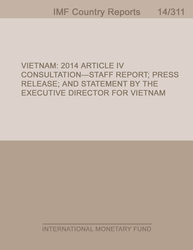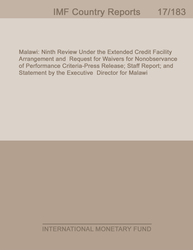
Vietnam: 2014 Article IV Consultation-Staff Report; Press Release; and Statement by the Executive Director for Vietnam
KEY ISSUESContext. Economic performance has improved over the last year. The recovery is taking hold, although domestic activity remains weak, in part constrained by weak banks and inefficient state-owned enterprises (SOEs). Inflation has declined, the current account remains in large surplus, and international reserves have increased. The authorities place a priority on preserving macroeconomic stability, tackling banking sector vulnerabilities, and reforming SOEs, though implementation has been gradual in some key areas.Outlook and risks. Growth is projected to recover gradually over the coming years, with the current account returning to a deficit and inflation contained. On current policies, public debt is projected to reach 60 percent of GDP. Risks include weaker trading partner growth, geopolitical tensions, slow structural reforms, and delayed fiscal consolidation.Early conclusion to key trade negotiations would be growth-positive.Fiscal policy. Deficits have been sizable and rising public debt requires attention. A medium-term growth-friendly consolidation is recommended, based on enhancing revenue and rationalizing unproductive expenditures while preserving crucial social and capital spending. This would ensure public debt sustainability with space to address contingent liabilities from banking sector and SOE restructuring.Monetary and exchange rate policy. The current monetary policy stance is appropriate. Greater exchange rate flexibility would help buffer external shocks, facilitate improved reserve adequacy, and help lay the groundwork for shifting toward using inflation as a nominal anchor over the medium term.Banking sector reform. Several policy measures have been taken recently, but the overall gradual approach will likely continue constraining credit growth and keep the system susceptible to shocks and significant asset deterioration. A more expeditious recognition of nonperforming loans, bank restructuring and orderly resolution would support robust credit creation and macro-financial stability.State-owned enterprise reform. Progress is being made. Implementing restructuring plans and accelerating equitization would help ensure more efficient resource allocation, strengthen banks, and deliver higher future growth. Reform should also focus on strengthening corporate governance and ensuring a level playing field.
Publication date: October 2014
ISBN: 9781498305181
$18.00
Add to Cart by clicking price of the language and format you'd like to purchase
Available Languages and Formats
| English |
Prices in red indicate formats that are not yet available but are forthcoming.
Topics covered in this book
This title contains information about the following subjects.
Click on a subject if you would like to see other titles with the same subjects.
Money and Monetary Policy , International - Economics , Public Policy ,
Also of interest
Summary
Copyright © 2010 - 2024
Powered by:
AIDC



